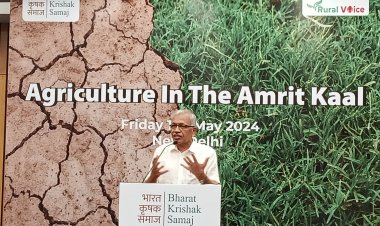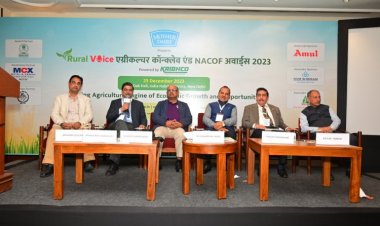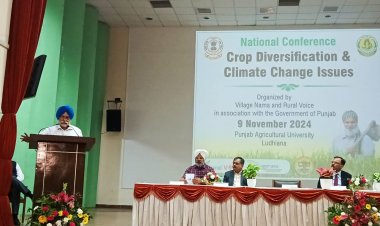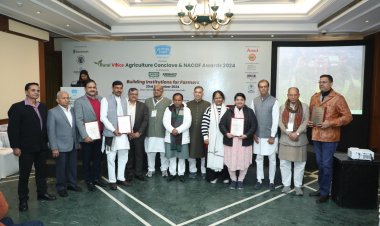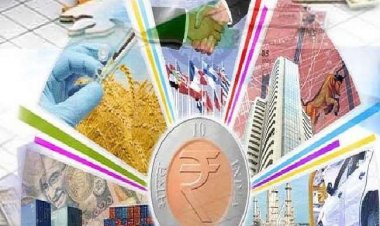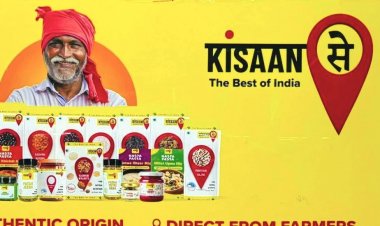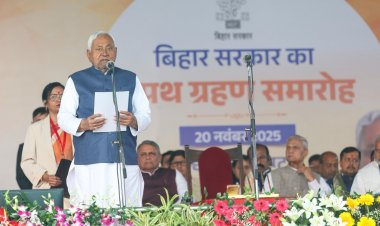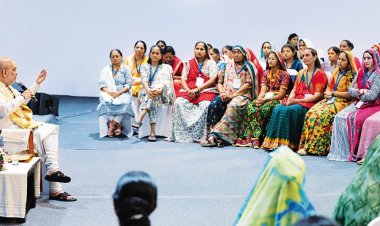“We tried to bring in a system where seed quality percentage can be easily assessed.” — Nikhil Das, Agdhi
Nikhil Das is the brain behind Agdhi, an agritech startup based in Bengaluru which aims to create the next revolution in agriculture. The startup is revolutionizing agriculture by introducing digital technology and building alternative solutions to facilitate sustainable methods in agriculture.
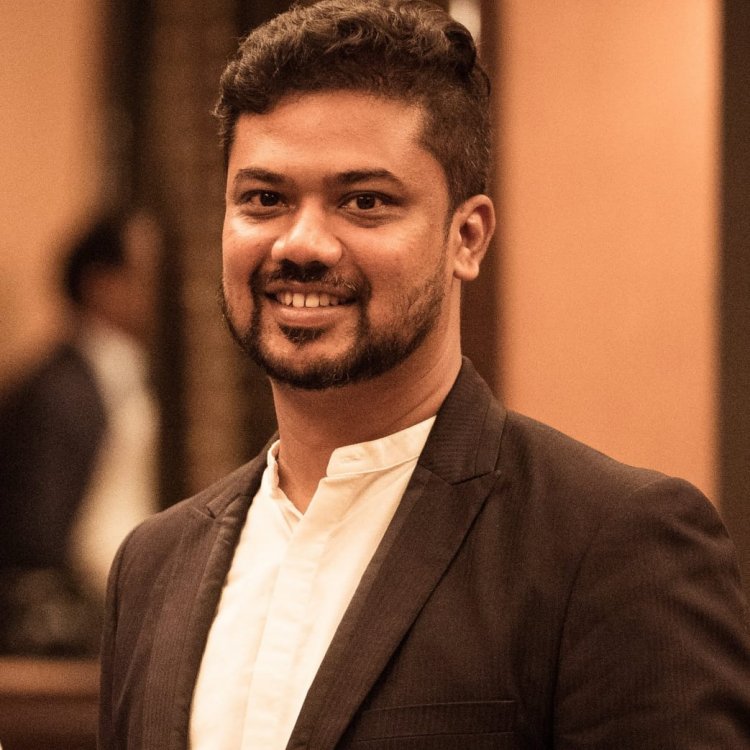
Agdhi, an agri-tech startup based in Bengaluru, has introduced vision-enabled AI-based technology in agriculture. It has launched machine learning and computer vision techniques in detecting the defects in the seeds and crops. This is bringing technology disruption in seed testing, seed sampling, and crop yield. Agdhi is the dream venture of Nikhil Das (ex CTO Havells, Founder of Promptec LED Lights) and Anshad Ameenza (President Innovation Incubator Advisory, Advisor for multiple start-ups). RuralVoice spoke to Nikhil Das, among other things, on this start-up, the technology it uses, the crops it targets and its future plans. Excerpts from the conversation Editor-in Chief Harvir Singh had with Nikhil Das:
Q: What is your expertise and what is the ideation behind this startup? You have been in Honeywell, Havells and an LED company. So, what was the idea behind moving to agriculture?
Ans: My journey as an entrepreneur started around 2006-07, when I started with Promptec LED company, the first LED lighting company in India. The journey with the company continued and I took the company to become India’s largest LED lighting manufacturing company in 2014. In 2015, we got strategic investment from Havells and I continued as group CTO in Havells. When I left the group back in 2018, I was looking for an area where… agricultural items are ignored. So, with this thought in mind, I started supporting the new start-ups and this was the time I got a chance to visit one of the seed manufacturing companies in India. Then this particular idea of bringing technology into agriculture came. That was in January 2020. I knew there were a lot of people bringing technology into agriculture, but if you really see the mainstream part, it (technology) is still not there in agriculture — the way we use it in medical and other fields.
Q: So basically, as you were in companies that were in LEDs and lighting, your non-competing clause with your last company did not allow you to move further in that area. That is the reason for your shift towards agriculture. With technologies like artificial intelligence (AI)- and analytics-based technologies coming into agriculture, what is unique about your start-up?
A: We got into a series of agriculture technologies and saw that many technologies were available over there but none of them were the mainstream ones. We have seen people trying out some initial stages in the development of such technologies. But, most of them were based on software and mobile applications. From the perspective of the real machine and hardware process, not much has happened. That is the area which we tried to enter. What we have made is not mere software but a hardware unit that has got machine-based capabilities and self-learning capabilities and introduced that part to the required segment. The real benefit of our technology goes to the farmer. Right now, the industry is working in a way in which a lot of farmers have been identified as growers, where they grow for the seed-manufacturing companies. So, farmers produce and supply back to the companies which had given them seeds. But the major issue is that the payment and the overall system are not smooth. The dissatisfaction part is very high in this segment. The farmers have a feel that they are not getting paid enough, whereas the companies have a fear that the produced seed is (not) right and of the quality that is expected out of it. The companies follow certain processes and traditions in the germination time. For example, the germination test will take 2-3 weeks’ time. Sometimes, after growing the plant, the company sees its outcome. This is a traditional way of testing adopted by the companies. So, the farmer gets paid only after all these tests are done. This sometimes takes 4-5 months of time to get the farmers paid. Another challenge for the farmers is that the data of the tests are not open. There are different qualities of seed. If there are 80% (percentage denotes quality) seeds of some amount, (often) the 90% seeds will be almost double the amount and 95% seeds will be of an even higher amount. So, sometimes what happens is that even though the farmers feel that they have produced 95% quality seeds, they are getting paid (only) for 85% quality seeds. On the other hand, the seed companies feel that it is not possible to produce 95% seeds and hence pay only for 85% seed quality. Nobody wants to deceive anyone, but unfortunately, the system is built that way. We thought, why not standardize this? We tried to bring in a system where the seed quality percentage can be easily assessed.
Q: So, basically you applied software and created a hardware unit to assess the quality of seed by a setup of hardware and AI that will enable farmers and seed companies to decide the price of seed. What exactly is the technology you apply?
A: There is a sample size that is already decided by the government authorities. This sample size, usually one-tenth of the produce, is subjected to tests. There are standards defined. Based on these standards, a lot is taken. And seeds from this lot are dropped into the machine. There is a conveyor system in the machine which takes the seed through the imaging section, which is the most complex section because multi-spectrum elimination is applied over there. I use one of our IPs over there. Well, I have expertise in this domain as I have worked in the field of the LED industry for more than 12 years. So, I know how light and its various spectra behave, how it can be eliminated. Once the conveyor system takes the seed through the light chamber, the imaging centres capture and deliver the various parameters of the seed. Therefore, the genetic variety of the seed can be identified. To identify, let’s say one lot of seed may take almost 10 hours of time and in this time thousands of seeds can be evaluated. So, three months’ time frame is cut down to a time frame of a few hours.
Q: What are the crops for which seed quality is being assessed with this machine?
A: India is the largest producer of cotton seeds. That’s the first type of seed assessed by us. Secondly paddy. Then there is chilli and similarly, we have identified 12 seeds. The one for watermelon is almost completed and machines for three more types of seeds will soon be released. We try to figure out which seeds have more demand and are produced more and try to go for those seeds.
Q: When did you launch your first product? For which seed?
A: The product which I launched first supported three seeds. It was launched in March. By December this year, our pipeline has 12 varieties of seeds.
Q: Who are your clients in this field?
A: Seed-producing companies are our major clients and then there are government agencies which are procuring seeds through farmers. Also, there are grow houses, managed by dealer and distributor kind of networks.
Q: Can you disclose the names of the companies and the government agencies which have a tie-up with you?
A: I can give you the names of the government agencies. The dealing companies don’t want to be disclosed…. We work with the Gandhi Krishi Vigyana Kendra (GKVK) College of Agriculture in Karnataka and then we have close relations with the Central Institute for Cotton Research Institute (CICR) in Nagpur and the Kerala Agricultural University in Thiruvananthapuram.
Q: Do you have any competitor in this field who has similar technology?
A: If you see globally, there are two companies working on this technology — Seed-X and Videometer. But in India, there is no such company.
Q: Where do you see your company one year from now?
A: We are working with a few global players — Bayer is one of them — across 22 different countries/regions for seed quality analysis and also some Indian companies and we have already done installations at a couple of them. By next year we are targeting to have 10-12 installations. We will have to do maximum data collection which will help us in improving. From next year we will try to expand in the global market. Right now, we are focusing on the Indian varieties.
Q: Have you got any investment from a fund or a venture capital (VC)?
A: Currently it is bootstrap but we are almost in the final stage of discussions with a couple of VCs.
Q: You have mentioned creating “Farmer Connect”. What is it?
A: We are trying to make an application that will help the farmer track the entire process right from the purchase of the seed. He will be able to track the expenses associated with it. Similarly, he will track the entire process of growth in the app. If he sees some abnormality when, say, the leaf comes out, he will be able to contact the back-end of the company at the right time.
Q: In order to identify diseases in crops or particular pests, you would require a plant pathologist or a scientist specialized in this area of crop protection. Do you have such experts in your team?
A: Yes, we have a team that is supporting us. We have recently introduced the “Expert” section in “Farmer Connect”. We can have consultants to the farmers on the doctor-patient application model.



 Join the RuralVoice whatsapp group
Join the RuralVoice whatsapp group

















